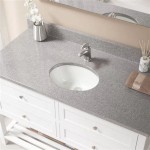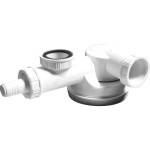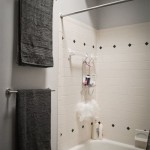Smallest ADA Bathroom Dimensions
The Americans with Disabilities Act (ADA) establishes guidelines for accessible design in public and commercial buildings, including bathrooms. These guidelines ensure that individuals with disabilities have equal access to facilities, promoting inclusivity and independence. While the ADA provides minimum requirements for bathroom dimensions, understanding these specifications is crucial for architects, builders, and homeowners alike.
This article will delve into the smallest acceptable dimensions for ADA-compliant bathrooms, exploring the rationale behind these standards and highlighting key considerations for creating accessible spaces. By understanding the requirements and best practices, designers, builders, and homeowners can ensure that their bathrooms meet the needs of all users.
Minimum Dimensions for ADA-Compliant Bathrooms
The ADA standards specify minimum dimensions for various bathroom components, including the toilet, sink, shower, and turning radius. These dimensions are designed to accommodate individuals with disabilities and allow them to maneuver safely and comfortably within the space. The minimum width for an ADA-compliant bathroom is 36 inches, providing sufficient space for a wheelchair to turn and maneuver.
The toilet must be positioned at a height of 17 to 19 inches, with a minimum of 30 inches of clear floor space in front of it. This allows wheelchair users to transfer safely and easily. The sink should also be positioned at a height of 17 to 19 inches, with a minimum of 30 inches of clear floor space underneath. This ensures that users can access the sink comfortably from a wheelchair.
The shower requires a minimum of 30 inches of width and 36 inches of depth. This provides ample space for a wheelchair to enter and turn. The shower seat must be at a height of 17 to 19 inches, with a minimum of 18 inches of clear space in front of it. Grab bars are essential for safety and stability, and they must be installed at specific locations and heights. The shower door should be at least 32 inches wide, allowing for easy access for wheelchair users.
Key Considerations for ADA-Compliant Bathroom Design
While the ADA standards provide minimum requirements, there are several additional considerations to ensure optimal accessibility and usability in a bathroom.
1. Clear Floor Space:
Beyond the minimum requirements, maximizing clear floor space is essential. This allows for easier movement and maneuvering within the bathroom. Avoid placing any obstructions, such as furniture or storage units, in the path of wheelchair users.
2. Accessible Controls:
Consider the accessibility of all controls, including faucets, towel bars, and toilet paper holders. They should be located within reach of a seated user and positioned for easy operation, even with limited dexterity.
3. Lighting and Contrast:
Adequate lighting and contrasting colors play a crucial role in accessibility. Well-lit spaces with contrasting color schemes between fixtures, walls, and floors help individuals with visual impairments navigate the bathroom safely. This includes using non-glare light fixtures and avoiding harsh shadows.
4. Materials and Finishes:
Selecting appropriate materials and finishes is essential for creating a durable and accessible environment. Non-slip surfaces for floors and shower areas are crucial for safety. Avoid using materials that are slippery or prone to condensation, as they can pose a risk for falls. Opt for durable and easy-to-clean surfaces that can withstand wear and tear.
5. Customization:
Remember that the ADA standards represent minimum requirements. Adapting the bathroom design to cater to specific needs and preferences of users can greatly enhance accessibility. For example, consider adding adjustable shower heads, grab bars in various locations, or specialized fixtures based on individual needs.
Conclusion
By adhering to the ADA guidelines and incorporating these considerations, designers, builders, and homeowners can create bathrooms that are not only aesthetically pleasing but also inclusive and accessible for all. This ensures that all users have equal access to basic necessities and promotes a more equitable environment.
Ada Accessible Single User Toilet Room Layout And Requirements Rethink Access Registered Accessibility Specialist Tdlr Ras

What Is The Smallest Commercial Ada Bathroom Layout

Designing Your Ada Compliant Restroom Crossfields Interiors Architecture

Chapter 6 Toilet Rooms

Ada Bathroom Layout Commercial Restroom Requirements And Plans
Ada Restroom

Ada Bathroom Requirements Toilet Partitions

Comparison Of Single User Toilet Room Layouts Ada Compliance

Minimum Size Ada Bathroom Google Search Floor Plans Restroom Design

Comparison Of Single User Toilet Room Layouts Ada Compliance
Related Posts







